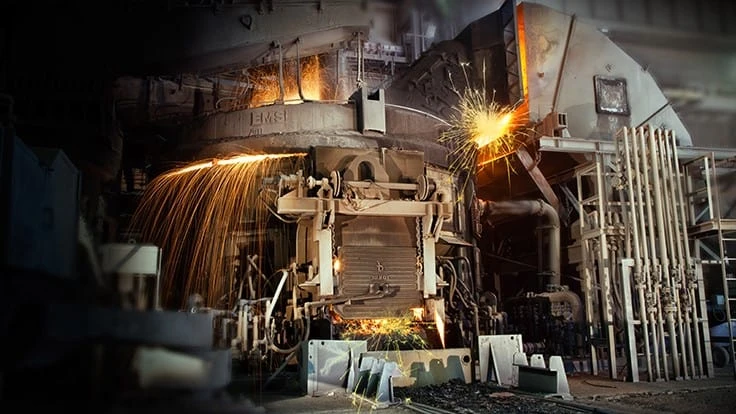
Photo from Recycling Today Photo Archive
ArcelorMittal, a multinational steel manufacturing corporation based in Luxembourg, has signed a letter of intent with the Belgium and Flanders governments supporting a 1.1 billion euro (about $1.3 billion) improvement project at its facility in Ghent, Belgium. The project includes the construction of a 2.5 million-metric-ton direct reduced iron (DRI) plant and two electric arc furnaces (EAFs).
According to a news release from ArcelorMittal, the company will reduce CO2 emissions by 3.9 million metric tons per year by 2030 with these additions.
“Today’s announcement is the third major decarbonization project we have announced in the past two months, demonstrating how we are taking firm steps to decarbonize our operations and crucially, to accelerate progress in the decade ahead,” says Aditya Mittal, CEO of ArcelorMittal. “None of these projects would be possible without government backing, so we are grateful to the governments of Belgium and Flanders for their ongoing support as we transition to net-zero steelmaking.”
The company says that DRI plants use natural gas, and sometimes hydrogen, instead of coal to reduce iron ore. The result is a reduction in CO2 emissions compared with blast furnace ironmaking. ArcelorMittal’s two EAFs will melt the DRI and scrap steel, which will be transformed in the steel shop into steel slabs and then further processed into finished products.
Once the DRI and EAFs are built, there will be a transition period. During this time, the company says production will move gradually from the blast furnace A to the DRI and EAFs, after which blast furnace A will be closed as it reaches the end of its life. By 2030, the change will result in a reduction of around 3 million metric tons of CO2 emissions each year.
“ArcelorMittal Belgium has a passion for sustainability and circularity,” says Manfred Van Vlierberghe, CEO of ArcelorMittal Belgium. “We continue to invest and launch new projects to remain at the forefront of energy and climate transition. This 1.1 billion euro project is a major milestone in our decarbonization journey.”
The company says approval from the European Commission for funding support will also be required for this project.
According to ArcelorMittal, the DRI plant will operate alongside Ghent’s blast furnace B, which restarted production in March following a significant investment of 195 million euros (about $228 million).
The company says various decarbonization initiatives, including the commissioning in 2022 of Ghent’s Steelanol/Carbalyst and Torero projects will see an annual CO2 emissions reduction of 0.9 million metric tons by 2030.
The company says the new DRI plant alongside a sustainable blast furnace enables unique synergies in ArcelorMittal Belgium’s road map to climate-neutral steelmaking. The various initiatives will enable ArcelorMittal Belgium to reduce its CO2 emissions by 3.9 million metric tons annually by 2030. This is equivalent to the greenhouse gas emissions from 848,172 cars being driven for a year, according to ArcelorMittal.
As a result, ArcelorMittal Belgium says it will make a significant contribution to ArcelorMittal Europe’s ambition to reduce CO2 emissions intensity by 35 percent by 2030 and to become carbon neutral by 2050.
Latest from Recycling Today
- Orion ramping up Rocky Mountain Steel rail line
- Proposed bill would provide ‘regulatory clarity’ for chemical recycling
- Alberta Ag-Plastic pilot program continues, expands with renewed funding
- ReMA urges open intra-North American scrap trade
- Axium awarded by regional organization
- Update: China to introduce steel export quotas
- Thyssenkrupp idles capacity in Europe
- Phoenix Technologies closes Ohio rPET facility





